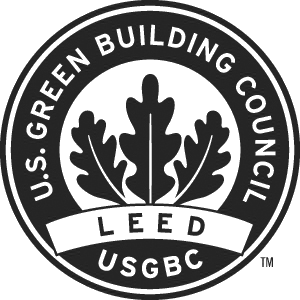 This time last year, we were reporting on the U.S. Green Building Council’s (USGBC) surprising delay of membership voting on an updated version of the dominant green building certification system, LEED (Leadership in Energy and Environmental Design). Launched for new construction in 2000, LEED was adopted in 2007 by the federal government for new and existing buildings and has continued to evolve with high performance building practices and technologies. Almost 54,000 projects in all 50 states and more than 140 countries are currently certified under the commercial and institutional LEED rating system. Critics in 2012, however, asserted that a draft of the next iteration was going too far. In particular, plastics and chemical manufacturers held that proposed LEED materials credits could restrict use of products containing formaldehyde and other chemicals of concern, potentially increasing building costs and threatening jobs. In response, USGBC delayed balloting until 2013, opened another comment period, and, appropriately, rechristened LEED 2012 as LEED v4.
This time last year, we were reporting on the U.S. Green Building Council’s (USGBC) surprising delay of membership voting on an updated version of the dominant green building certification system, LEED (Leadership in Energy and Environmental Design). Launched for new construction in 2000, LEED was adopted in 2007 by the federal government for new and existing buildings and has continued to evolve with high performance building practices and technologies. Almost 54,000 projects in all 50 states and more than 140 countries are currently certified under the commercial and institutional LEED rating system. Critics in 2012, however, asserted that a draft of the next iteration was going too far. In particular, plastics and chemical manufacturers held that proposed LEED materials credits could restrict use of products containing formaldehyde and other chemicals of concern, potentially increasing building costs and threatening jobs. In response, USGBC delayed balloting until 2013, opened another comment period, and, appropriately, rechristened LEED 2012 as LEED v4.
This June, after an unprecedented six comment periods resulting in over 22,000 public comments, LEED v4 was presented to the USGBC membership for a vote. Balloting results were announced on July 2nd, with 86% of overall membership in favor of adoption—2/3 approval of USGBC’s nearly 13,000 members was required. So that the rating system represents the group’s diverse membership, majority approval is also required from each major stakeholder group. About 89% of producers (which include contractors and builders) voted “yes,” as did 90% of users, and 77% in the general interest category (which includes utilities, manufacturers and organizations). Rick Fedrizzi, USGBC president and CEO, proclaimed the vote as “overwhelming” approval, saying “our community once again embraced leadership and paved the way for the next generation of green building.”
Supporters inside and outside the USGBC view adoption as a leap forward, toward cleaner, healthier facilities. Participants in LEED v4 may first notice improvements in usability compared with LEED v3, known as LEED 2009, through additional online tools and resources and a simplified documentation process. Enhanced flexibility in v4 is meant to open compliance paths for new market sectors including data centers, warehouses and distribution centers. Also, expect new credit categories, plus new prerequisites and credits in existing categories. Added categories include Integrative Process, Location and Transportation and Performance.
New categories and other revisions are aimed at substantially strengthening performance standards, beyond net-zero to net-positive whenever possible. The focus on integrated design and emphasis on measurement and performance will increase technical rigor throughout the rating system. New (albeit controversial) credits for regional and reused materials are similarly designed to reward sustainable choices, such as avoidance of chemicals of concern and sourcing of responsibly harvested wood and extracted materials. LEED v4 moves beyond consideration of individual product traits to a more holistic approach, called Life-cycle Assessment (LCA). The LCA methodology will push the building industry to examine the environmental and health impacts of a product from extraction of raw materials, to processing and manufacturing, to transportation, to use and disposal, reuse or recycling. Rick Fedrizzi hails LCA and other v4 innovations as part of the system’s ambitious goal to drive “deep and permanent change” in product development as well as building practice and public policy.
Yet anti-LEED lobbying continues apace. Opponents are proposing language for the pending Shaheen-Portman energy efficiency bill (S. 761) that would effectively ban use of LEED by the federal government. The group behind the effort, the American High-Performance Buildings Coalition (AHPBC), promotes building rating systems based on International Organization for Standardization processes (particularly ANSI). In formal response to LEED v4 approval, AHPBC stated, “We are concerned that USGBC announced approval of LEED v4 before it has even finished reviewing the comments, objections and reasons accompanying the various negative votes submitted, many of which were on behalf of not just a single individual, but entire industries.” LEED v4 advocates are pushing back already. On July 9, Skanska USA announced its resignation from the U.S. Chamber of Commerce to protest the Chamber’s backing of the AHPBC’s position on LEED. President and CEO of Skanska USA, Michael McNally, said in a Washington Post editorial, “To me, it is inconceivable that a few single-minded businesses are creating a false debate in Washington about LEED and attempting to slow down the green building boom.”
“LEED v4 will demand more of all of us,” admits USGBC’s Nick Fedrizzi, “—as it should.” Registration in LEED 2009 will remain open through June 2015, but for those ready to move forward, USGBC’s website offers extensive resources for exploring the new system, including peeks at scorecards and online forms. Beta testing on more than 100 projects continues, and the full LEED v4 will be ready for launch, complete with training workshops, at Philadelphia Greenbuild, November 20-22.
